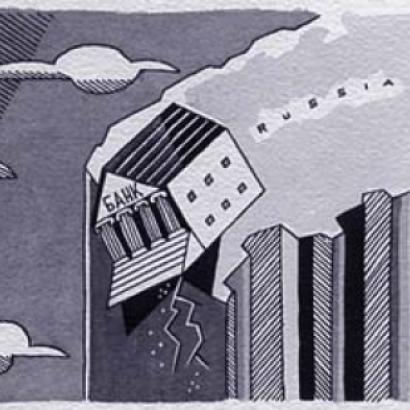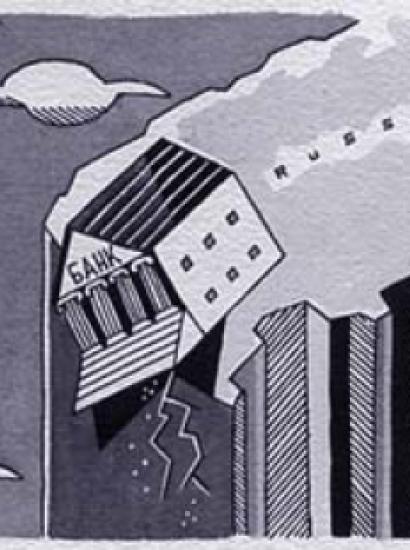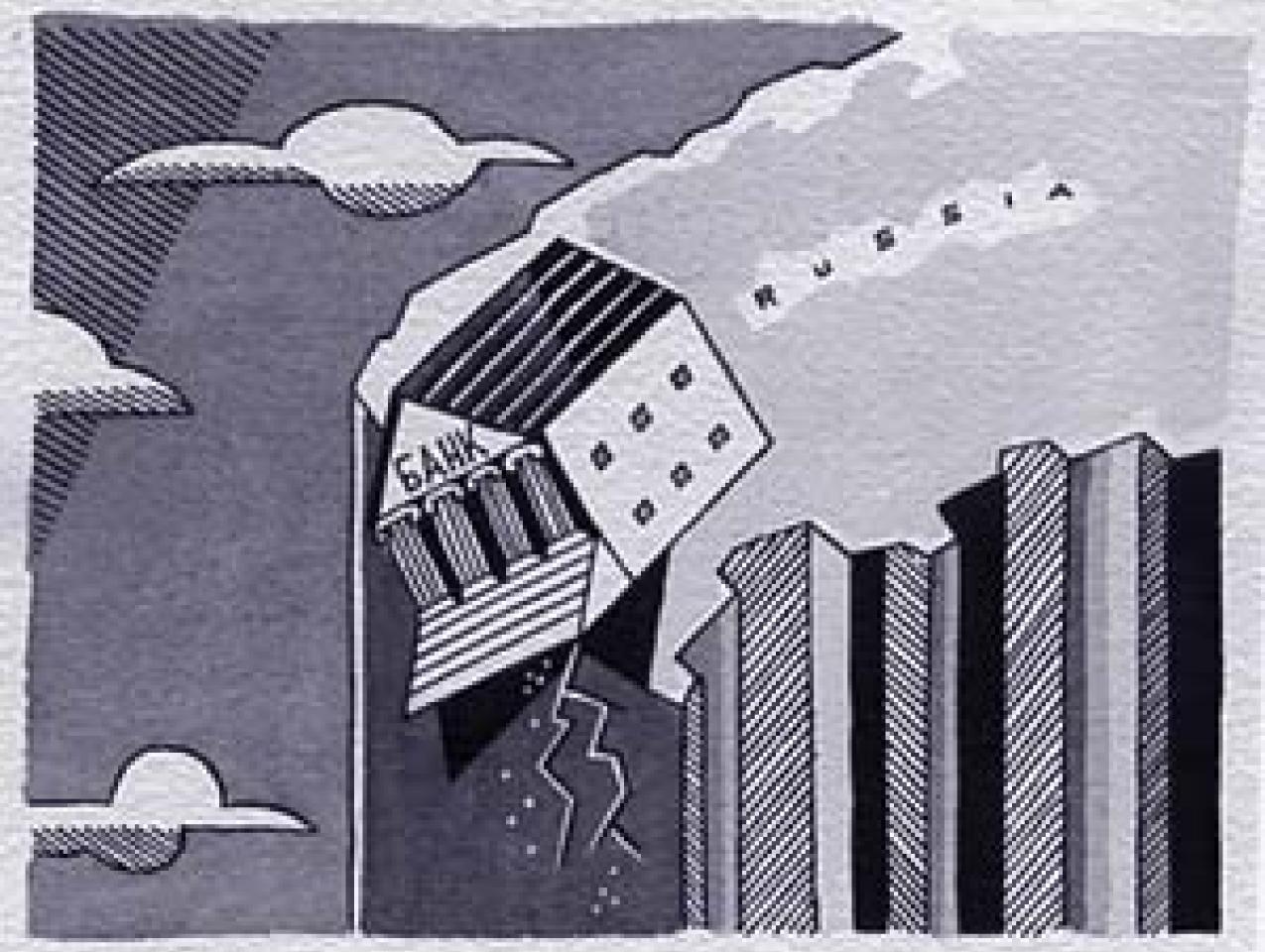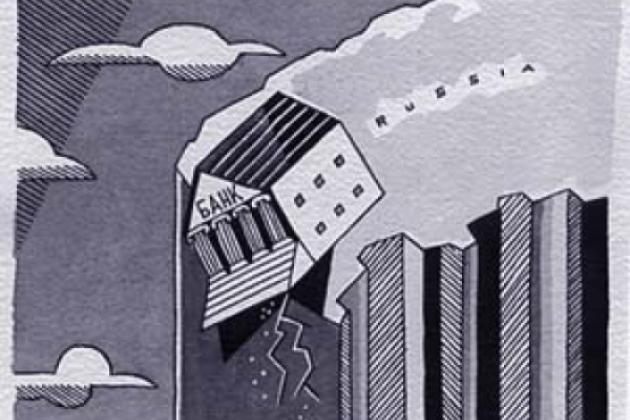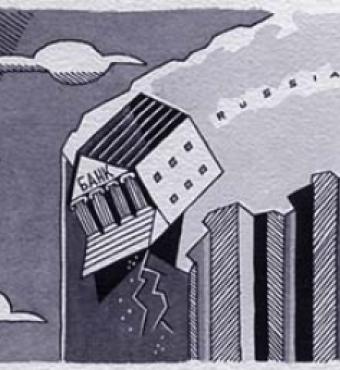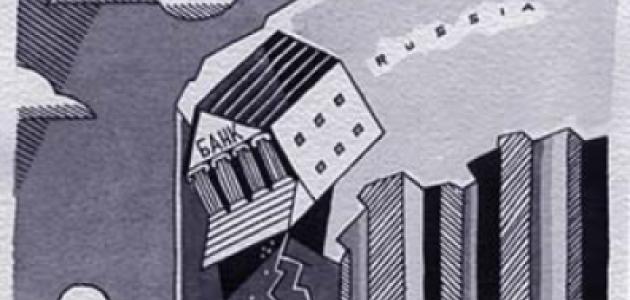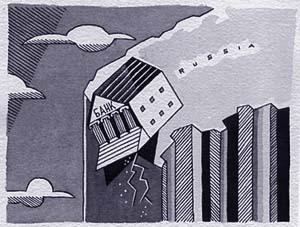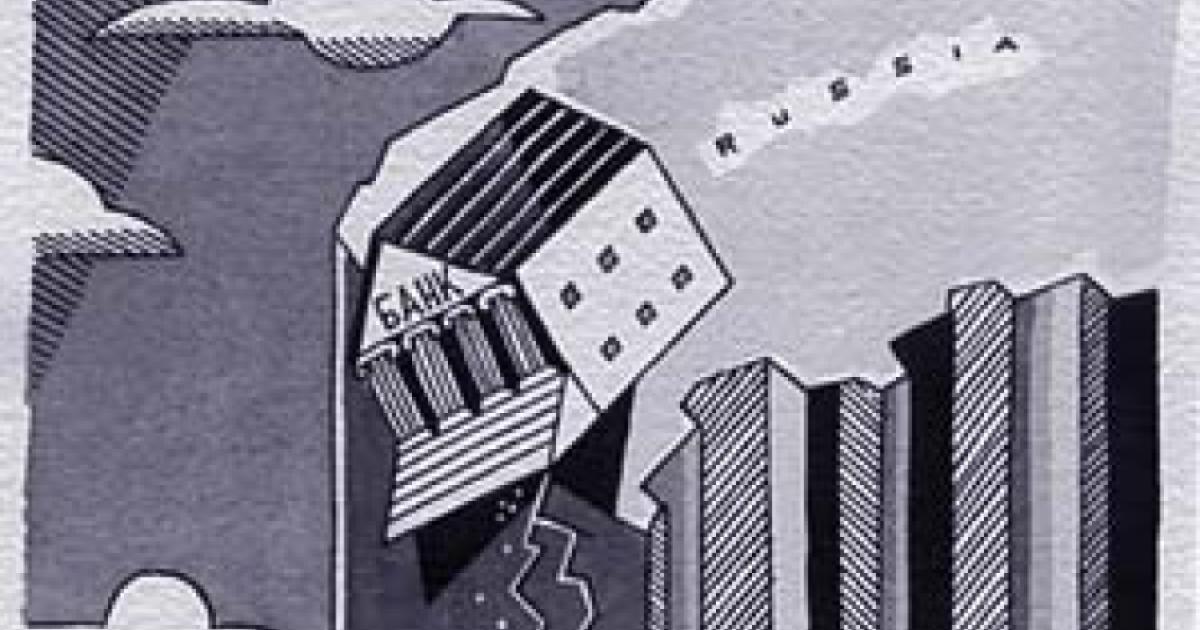- Economics
- Budget & Spending
- Monetary Policy
- International Affairs
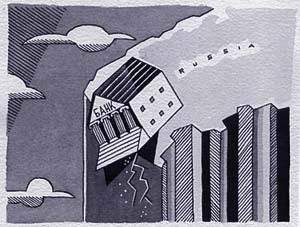
This summer the International Monetary Fund agreed to yet another rescue package for Russia. Now the markets are waiting to see if the $17 billion-plus from the IMF is enough to prevent the Russian economy from sinking further and taking the ruble with it. The real answer depends on whether something is done to avert an impending banking crisis.
Russian banks bear little resemblance to their Western counterparts. Most were created through currency speculation in the hyperinflationary days of the early 1990s; they have survived on financial manipulation, not loans to productive enterprises. The banks siphon subsidies, hold massive stakes in the country’s choicest assets, and buy up high-yield government debt. The major Russian banks have unrivaled political clout as well: They underwrite political campaigns and have large stakes in private media concerns.
This political influence has served to disguise banks’ fragility. While Russian financial statements fail to differentiate between performing and nonperforming assets, nonperforming assets constitute a quarter of all loans; worthless promissory notes in bank portfolios raise this fraction to a third. The balance sheets exclude such liabilities as internal and direct government loans to, as well as tax arrears of, bank-owned enterprises. Account for all of this, and the equity of the banking system as a whole goes from positive to negative.
Any solution to Russia’s current crisis that does not address the infirmities of the banking sector will ultimately fail, leading to a financial collapse or demands for a Western-led bailout of the banking system. Yet there are alternatives. Russia can mobilize two assets: an estimated $40 billion of private dollar savings stuffed under mattresses and in cupboards and the substantial sector of richly endowed natural resource companies.
There is a relatively straightforward way to mobilize the dollar savings: Immediately lift all restrictions on foreign banking operations throughout the country. At the beginning of 1998, foreign banks represented about 4 percent of all banking capital in Russia, which indicates the potential for expansion. Banks would be asked to insure foreign currency deposits, backed by their global assets, in exchange for unrestricted access to the Russian market. Foreign banks could lend to productive enterprises in either rubles or dollars. The dollar would emerge as a second currency, drawing some of that hidden $40 billion into insured, interest-earning accounts. This in turn could create several hundred billion dollars in new real credit.
Competition with foreign banks would force Russian banks to behave more like real banks. But there is still the matter of about $38 billion in government bonds sitting in the vaults of the banks, which represents enormous debt-servicing costs for the Russian treasury. That’s where companies with huge natural resource holdings come into the picture.
By Western accounting standards, the entire Russian banking system is actually insolvent.
Tax deadbeats would be taken over by the government in settlement of their tax debt, then reprivatized. This would come about by recapitalizing Russia’s insolvent banks, using a combination of natural resource holdings in government hands, the shares of enterprises belonging to the former banks, and equities that the government would take over in exchange for tax arrears.
Restructuring the banks will also require starting from a clean slate. The government would conduct a debt-for-debt swap with the banks—trading the government bonds held by the banks for repayment of overdue debts. The operation would, at the stroke of a pen, bring the insolvency of many of Russia’s banks into the light of day. The Central Bank of Russia would then take over the insolvent banks and transfer them to newly created mutual and pension funds, owned by private citizens who volunteer to relinquish claims on the government, such as pensions, in exchange for shares. This amounts to privatizing welfare.
The recapitalized banks would be encouraged to open dollar-denominated accounts, convertible on demand into equities in resource enterprises. They would be able to swap nonperforming loans of indebted enterprises for their equity and either participate as new owners in restructuring enterprises or sell these equities to various funds, thereby establishing efficient ownership and management.
Some of the real assets in government hands would at the same time be loaned to the Central Bank, exchanged for government bonds, and used to back the convertible accounts, facilitating the transfer of household dollars to the newly established banks. The Central Bank could purchase and have as its nonborrowed foreign exchange reserves a large part of that $40 billion in exchange for mineral rights sold to the banks. The value of these mineral rights will serve as assets, matching the new banks’ initial deposit liabilities of the same portion of that $40 billion. In this sequence of swaps, the stock of rubles in circulation would be backed by foreign exchange reserves and the stock of deposits, by natural resource equities. The ultimate result would be a flexible, natural resource–based system resembling a currency board.
There are no doubt other ways to address Russia’s banking problems. Forcing questionable and unprofitable banks to close; demanding transparent, audited financial statements; and opening the banking sector to more foreign competition would in themselves be big steps forward. The alternative, however, is clear: Unless real, private banks are created, Russia will face a never-ending state of financial turmoil—no matter how much the IMF and Western banks hand out.








